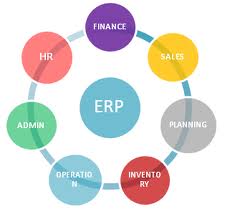According to Behrens (2009) Shadow systems are the systems which replicate data and/or functionality in part or full of the enterprise system in the organisation. Shadow systems are considered undesirable because they could decrease the use of enterprise systems. The organisational performance could go down if shadow systems are not aligned with the organisation’s ERP system.
Video 1.1 Best practices of ERP
Causes that could increase the number of shadow systems in post ERP implementation
- Poor communication between departments.
- System inflexibility.
- Poor planning and management
- Poor data conversion and transformation.
- Change Management or Users resistance to change.
- Users lack of trust of the ERP.
- Users perceive a gap in the functionality of the system.
- Ineffective training.
- Lack of Support from management.
- Conflicts between functions.
- Highly creative users building work-around.
Shadow systems really exist in many companies. Nonprofessional developers usually develop ‘end user’ shadow systems that could create many problems like redundant data entry, provision of inconsistent information and wastage of resources. The development of shadow systems is problematic to stop due to easy access of end user tools. Individual users create shadow systems with Excel, Access or similar tools. However, shadow systems developed by the computing professionals collaborating with the IT division are more likely to use good practice and don’t exhibit negative attributes (Behrens, 2009).
Fig 1.1 Different functions covered by ERP
System integration threats of shadow systems
According to (Fang & Wei 2009) these systems have low productivity and inconsistency. There couldn’t easily integrate with the central enterprise systems. A business cannot achieve its goals without a reliable ERP system because ERP systems are designed to provide the accurate information and real time situation. A shadow system is detached from the ERP therefore is not integrated. There are also risk of reduced productivity, collaboration, efficiency and customer satisfaction.
Who could be threatened by Shadow systems?
According to Patricia (1997) Shadow stems could affect the entire organisation especially IT/IS departments. It could also threatened the suppliers and customers, who would be expecting increased collaboration, integration and information sharing leading to better and improved business relationships and service.
Positive and negative impacts of shadow systems on organisation
According to Sherman (2006) Shadow systems help business process such as budgeting, forecasting and many other reporting tasks. Users may have ES in the company but they really like to generate the real reporting and analysis via using data from shadow systems. Also, data retrieve becomes more faster from shadow systems. On the other hand, each report or analysis interprets the data differently, so even when the numbers start off the same in each silo, the end results will not be consistent. Data which is inconsistent and inaccurate will surely smudge the reflection of shadow system for users. However they’ll also experience the tension of create, maintain and supervision their individual departments.
References
Behrens 2009, ‘Shadow Systems: The good, the bad and the ugly’, Communications of the ACM, vol. 52, no. 2, pp.124-129.
Fang, L & Wei, MN 2009, ‘On the global existence and finite time blow up of shadow systems’ ,Journal of Differential Equations, vol. 247, pp.1762-1776.
Patricia, S 1997, ‘Intervening in the shadow systems of organizations’, Journal Of Organizational Change Management, vol.10, no. 3, pp. 235-245.
Sherman, R 2006, ‘The data shadow system condrum’ ,Journal of Business Change Management, vol. 22, no. 2, pp. 175-189.
Annotated Bibliography
Jones, D, Behrens, S, Jamieson, K & Tansley, E, ‘The rise and fall of a shadow system:lessons for enterprise system implementation, pp. 1-15, viewed 12 July 2012, http://davidtjones.wordpress.com/publications/the-rise-and-fall-of-a-shadow-system-lessons-for-enterprise-system-implementation
Rick Sherman 2006, Business intelligence systems: Data shadow systems pros and cons, viewed 14 July 2012, http://searchbusinessanalytics.techtarget.com/tip/Business-intelligence-systems-Data-shadow-systems-pros-and-cons

